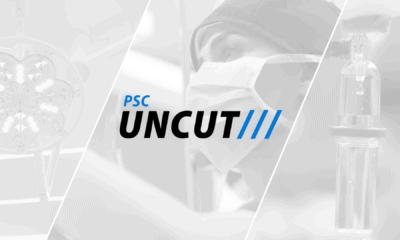Many women of all sizes, shapes, and fitness levels want breast augmentation – including the extremely fit. With a growing culture of health and fitness, the latter spawning numerous trends and work-out regimens such as CrossFit, it has become a rewarding challenge for plastic surgeons to provide great results in hyper-fit female bodies.
Board certified plastic surgeons Dr. Melinda Haws and Dr. Richard Restifo discuss the options and how newer technologies and techniques have helped provide sought-after results for fit women.
Addressing ‘Lean and Mean’ Bodies
The growing propensity for athleticism and health has produced many female bodies devoid of fat. While this is great and seen as a positive, it makes performing breast augmentation a difficult task. “With the CrossFitters, it’s a bit of a conundrum,” explains Dr. Restifo. “These women tend to be ‘lean and mean’ without much to speak of in breast tissue or body fat – so the type of women that you might be tempted to put [the implant] under the muscle. But that’s also a problem! These women are engaged in levels of exercise that some of us might consider unreasonable.”
Breast augmentation implant placement comes in two flavors – over the pectoral muscle and underneath. Under the muscle is typically the option used when a patient has little to no breast tissue or fat of their own, providing a natural look. This becomes problematic in the extremely fit, as these women are utilizing and have larger chest muscles, an issue that leads to what is known as animation deformity. This is when the muscle causes the implant to become visible through animation, or movement. Balancing this between a natural look leads surgeons to consider an over the muscle placement, a strategy made much better by a new wave of technologically superior implants.
“We worry about animation but probably even more importantly for these patients is the loss of upper body strength, which obviously the implant under the muscle will do,” continues Restifo. “My personal go-to for this type of patient is to try and put a cohesive silicone gel implant over the muscle.”
Easing, or Eliminating, Animation Deformity
The over vs. under the muscle debate has merits both ways and typically comes down to personal preference for the surgeon. Those with experience in one strategy over the other have the experience and skill to make them work for their patients. Thoughtful consideration of both options, as well as utilizing newer implants, becomes extremely important.
“I’m a big fan of over the muscle anyway, subglandular implants, because of animation deformity,” shares Dr. Haws. “A certain amount of [fit patients] want to be a normal size, but there are a lot who want to be way bigger. The new cohesive gel implants – whether they want an anatomic shape that looks very natural, or they want something more round that looks unnatural – we can give them a breast that isn’t ripply that looks good without any animation deformities.”
An Extreme Athlete? Or Extremely Fit?
The difference between a female who is an extreme athlete and one who simply has an extremely fit body is important. Thus far, the over-the-muscle technique with the new cohesive gel implants works well for those who are athletes. The options for those who look like athletes, but may not perform as athletes, are a bit more plentiful.
“It’s important to realize that there are different levels of CrossFit – some more crazy than others,” explains Restifo. “You can have a conversation with a woman saying what sort of movements do you do and what is your level of competitiveness? Because honestly some of them might be better served by putting the implant under the muscle.”
In this case, Dr. Restifo notes that an under the muscle placement may work in patients who don’t necessarily use their chest muscles in an athletic fashion. This means that a larger-than-average pectoral muscle, or just a muscle that sees a lot of use, may cause issue with an implant underneath, whereas a pectoral muscle that isn’t that large and doesn’t see use will not spawn the sort of issues surgeons fear. For these patients, it may then be ideal to go under-the-muscle.
Not to mention that if the patient has little to no body fat, under the muscle might be the only option. “In a woman who has low body fat, you have to go under the muscle,” shares Haws. “And they just have to accept that they will have animation deformity.”
Extremely fit bodies complicate breast augmentation, but do not discount great results. The combination of surgical expertise and insight/training into newer, more precise procedural techniques are the hallmarks of board certified plastic surgeons. With help from their industry counterparts devising and providing more intricate and pointed implant options, there are few would-be patients that cannot achieve a great and, if desired, natural-looking augmentation.









Facebook
Twitter
Instagram
YouTube
RSS